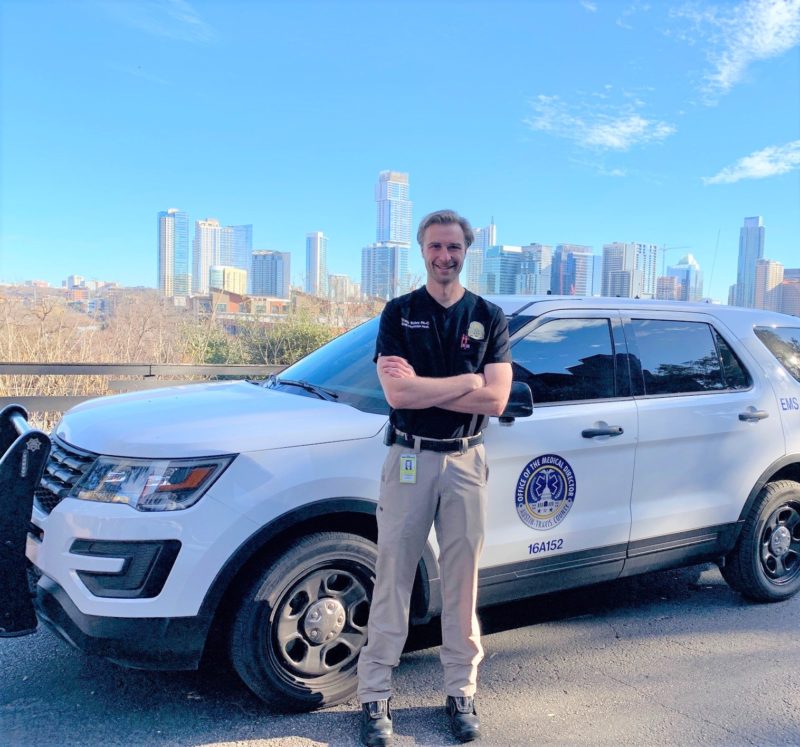The City of Austin plans to expand a service launched in 2019, the Paramedic Practitioner Program (PPP), which offers both medical and mental health services for those who have an emergency but may not require hospitalization.
The current two-person team was started by Office of the Chief Medical Officer in partnership with Austin/Travis County EMS. According to the city’s press office, the program will hire more staff and continue to expand its services in 2022.
The PPP Team currently treats between 100-200 patients a month, mainly on the streets, while traveling in an emergency response vehicle. By meeting and treating patients where they are, at the site of their emergencies, the team is able to help save those who do not require hospitalization from having to make unnecessary and costly trips to hospital emergency rooms.
About a third of the team’s patients are people experiencing homelessness.
“Austin/Travis County has a lot of gaps among the vulnerable populations,” said Travis Baker, Senior Paramedic Practitioner and Clinical Manager for the program. “This program delivers care that can help bridge the difference between critical care services and services that can be taken care of on-site such as stiches, IV fluids, burns, issues with asthma and other illnesses.”
While Baker responds to medical issues, he also hands out information to people living on the streets on how they can access support services, housing information, and social services that will help mitigate future illnesses and assist the homeless in finding the resources they need.
“We have a large population living in Austin that knows of no other way to access medical care than to contact 911, said Chris Brown, EMS Physician Assistant for the Paramedic Practitioner Program. “Often times, a Paramedic Practitioner is the only provider they have seen in a long period of time and we are fortunate enough to be able to take time to listen to their complaints and medical issues and assist in their care. “
Data has shown that 30-40% of all 911 calls are not life-threatening calls that may not require an ambulance transport to the hospital. The most common calls the team responds to are for illnesses, chronic wounds, burns, abscesses, skin infections, worsening of existing conditions such as asthma and chronic heart conditions, and minor injuries such as cuts or sprains, all of which can be handled effectively on the streets.
While many of Baker’s patients have less serious needs, he says that some have required and received urgent, life-saving care. Patients who require immediate hospital care are still transported to an emergency room by ambulance.
Taxpayer benefits of the program include savings on EMS and emergency room costs. Compared to a visit by the paramedic team, an ambulance response is about four times as expensive and a response by a firetruck is about ten times as expensive.
